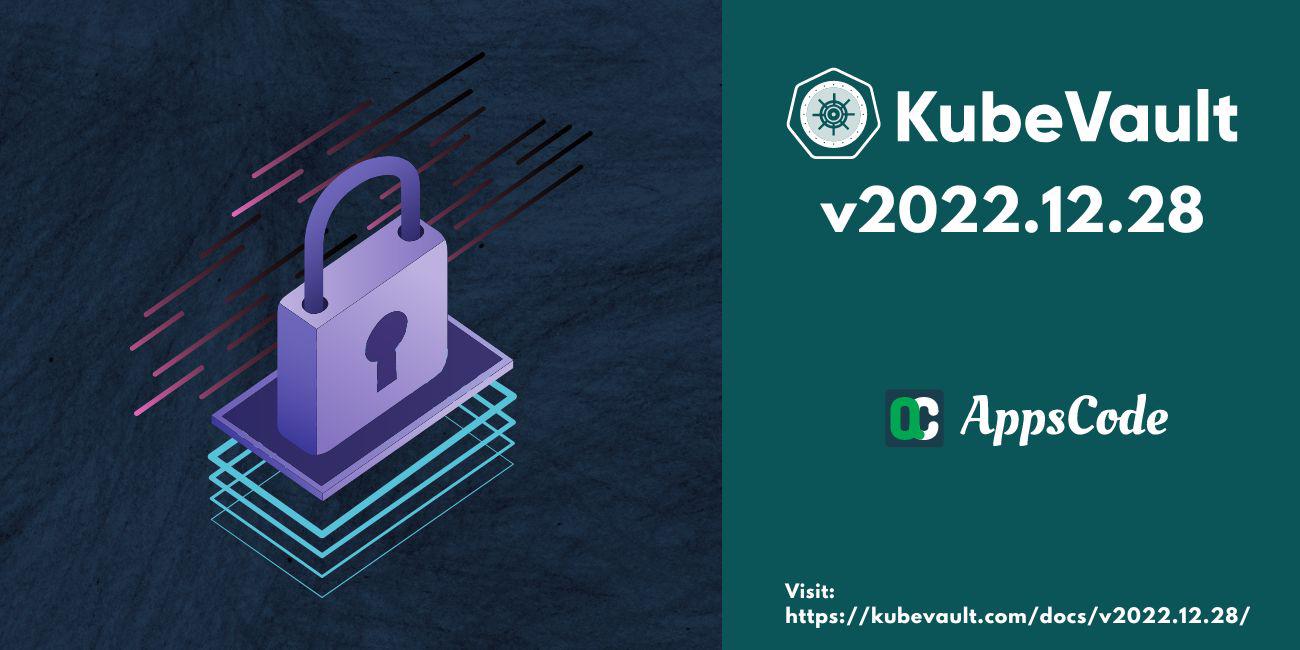
KubeVault is a Kubernetes operator for HashiCorp Vault . The Vault is a tool for secrets management, encryption as a service, and privileged access management. The KubeVault operator makes it easy to deploy, maintain and manage Vault servers in Kubernetes. It also supports various secret engines management, policy management in the Kubernetes native way.
We are very excited to announce the release of KubeVault v2022.12.28
Edition. In this release, the SecretEngine for Redis has been added, KubeVault CLI has been updated for generating SecretProviderClass for Redis.
In this post, we are going to highlight the major changes. You can find the complete commit by commit changelog here .
Redis SecretEngine
Redis Secret can be used to generate dynamic credentials for Redis Standalone database using Vault. First, we need to enable a SecretEngine for Redis and then we can create different roles with different set of permissions using RedisRole. Then Vault will generate credentials for the role when user request for credentials. We can also mount the secret in a pod using SecretProviderClass
Now, Redis SecretEngine can be enabled, configured & RedisRole can also be created with KubeVault.
Here’s a sample yaml for Redis SecretEngine & RedisRole:
apiVersion: engine.kubevault.com/v1alpha1
kind: SecretEngine
metadata:
name: redis-secret-engine
namespace: demo
spec:
vaultRef:
name: vault
namespace: demo
redis:
databaseRef:
name: redis
namespace: db
pluginName: "redis-database-plugin"
apiVersion: engine.kubevault.com/v1alpha1
kind: RedisRole
metadata:
name: write-read-role
namespace: demo
spec:
secretEngineRef:
name: redis-secret-engine
creationStatements:
- '["~*", "+@read","+@write"]'
defaultTTL: 1h
maxTTL: 24h
We can bind the role with a service account and mount the generated credentials using SecretProviderClass. After creating a SecretRoleBinding
the following commands generates SecretProviderClass YAML for RedisRole
$ kubectl vault generate secretproviderclass vault-db-provider -n demo \
--secretrolebinding=demo/secret-role-binding \
--vaultrole=RedisRole/write-read-role \
--keys username=redis-user --keys password=redis-pass -o yaml
To learn more about how to mount Redis credentials in pod, head over here
What’s Next?
Please try the latest release and give us your valuable feedback.
- If you want to install KubeVault, please follow the installation instruction from here .
Support
To speak with us, please leave a message on our website .
To receive product announcements, follow us on Twitter .
If you have found a bug with KubeVault or want to request new features, please file an issue .










